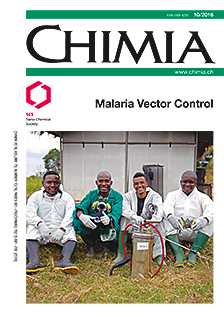Chemosterilants for Control of Insects and Insect Vectors of Disease
DOI:
https://doi.org/10.2533/chimia.2016.715Keywords:
Aziridine, Chemosterilant, Malaria, Sterile-insect technique, Vector-borne diseaseAbstract
Both historically and at present, vector control is the most generally effective means of controlling malaria transmission. Insecticides are the predominant method of vector control, but the sterile insect technique (SIT) is a complementary strategy with a successful track record in both agricultural and public health sectors. Strategies of genetic and radiation-induced sterilization of Anopheles have to date been limited by logistical and/or regulatory hurdles. A safe and effective mosquito chemosterilant would therefore be of major utility to future deployment of SIT for malaria control. Here we review the prior and current use of chemosterilants in SIT, and assess the potential for future research. Recent genomic and proteomic studies reveal opportunities for specific targeting of seminal fluid proteins, and the capacity to interfere with sperm motility and storage in the female.Downloads
Published
2016-10-26
Issue
Section
Scientific Articles
License
Copyright (c) 2016 Swiss Chemical Society

This work is licensed under a Creative Commons Attribution-NonCommercial 4.0 International License.
How to Cite
[1]
Chimia 2016, 70, 715, DOI: 10.2533/chimia.2016.715.







